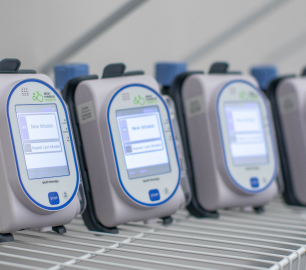The baseball season is upon us, bringing to mind the importance of an effective team. As we watch our teams play, we occasionally witness top ranked teams face defeat. Any sports fanatic begins to question how the unpredicted could’ve occurred. How does that happen? Did my team just have an off night? How could they have lost to the underdog?!
Team chemistry is complex but paramount for the success of any organization. More than just a collection of talented members, effective teams must combine the efforts and abilities of members the right way – or get beat by less talented teams that can. Unfortunately, no situation or team is identical, so there is no easy answer on how to build an effective team. However, research has identified six factors that are proven to foster positive team chemistry:
- Diversity
- Role Taking
- Constructive Norms
- Leadership
- Cohesiveness
- Common Vision
Diversity
Diversity in a team fosters chemistry by creating a dynamic environment where individuals bring unique perspectives, experiences, and skills to the table. Diverse teams are better equipped to tackle complex challenges, offering a broader range of knowledge to spark creative strategies and solutions.
Diversity creates a safe space for improved communication and empathy amongst a team. Collaboration amongst a diverse group of people often requires learning to communicate in ways that are inclusive and clear. Empathy stems from understanding one another’s background and experiences, ultimately boosting a positive relationship as peers. When a team is able to embrace diversity, they tend to foster an atmosphere of mutual respect and establish a sense of belonging.
Role Taking
By definition, a team is a group of people that work together towards a common goal. The most obvious and visible team role is that of the team leader. There are scenarios with seasoned and highly effective teams where leadership is more fluid, with different members assuming leadership at different times, however most teams benefit with a single leader.
The most important aspect of role taking is acceptance and buy-in. Many roles a team may require aren’t the most glamorous, challenging, or fulfilling yet are critical to the success of the team. However, formal and informal roles amongst a team support the overall functionality of the group. Role delegation is crucial in fostering chemistry, ensuring that the team is balanced, and all bases are covered and reinforced.
The willingness to accept responsibility for these roles, with the understanding that there can be no success without them, is a key to effective teams. Designating roles sets expectations, instilling accountability. It is important to make each team member aware of what is expected of them and how they can play a part in contributing to the team’s overall goals. This structural system reduces confusion and conflict, promoting harmonious processes.
Constructive Norms
Similar to setting expectations, constructive norms are agreed upon behaviors and standards that guide how team members interact, communicate, and collaborate. Constructive norms foster chemistry by building trust and respect, establishing a sense of unity within the team.
Constructive norms encourage effective and transparent communication. This fosters a culture of support and encouragement, strengthening the team’s bond. As a result, constructive norms gear a team towards shared values and objectives.
Leadership
Many approach leadership as a ‘management’ role. Management, classically defined, is concerned with directing output and quality. However, an effective leader guides the team’s dynamics, promoting an environment that encourages collaboration and constructive reinforcement. Leaders provide direction, encourage participation, promote positive relationships, and support team members.
Leadership fosters chemistry within a team by setting the tone for how members work with one another. Along with role taking, it is crucial to appoint a leader to lay a foundation of trust, confidence, and support amongst a team.
Leadership demonstrates support through recognition and celebration, making members feel valued and trust in their ability to perform. When team members feel supported, they are more likely to feel a sense of loyalty and community, enhancing team chemistry.
Cohesiveness
When a team embodies unity and mutual support, it creates a strong bond that fosters chemistry and enhances performance. Cohesiveness demonstrates dependability, allowing individuals to feel comfortable collaborating without the fear of judgement. Cohesiveness is built on the foundation of clear communication and shared goals. When everyone is on the same page working towards a shared vision, allowing team chemistry to grow as everyone is contributing to the team’s success.
Common Vision
To reach the highest levels of performance, teams must have a clear understanding of a shared end goal. A common vision provides a sense of direction, aligning with a shared purpose and desired outcome. Team leaders who can articulate a vision for their teams can create passion and inspire exceptional performance. Operating on a common vision motivates the team, building enthusiasm every step of the way.
Key Takeaways
Chemistry in any collaborative environment is crucial for success. Good chemistry between team members fosters open and honest communication, encouraging individuals to express their ideas and provide constructive feedback. Chemistry creates a bond of trust, boosting collaboration and conflict resolution. Diverse teams who are open and honest with each other foster an environment that maximizes productivity and performance. Overall, chemistry is the difference between a collaborative group and a high-performing team.



